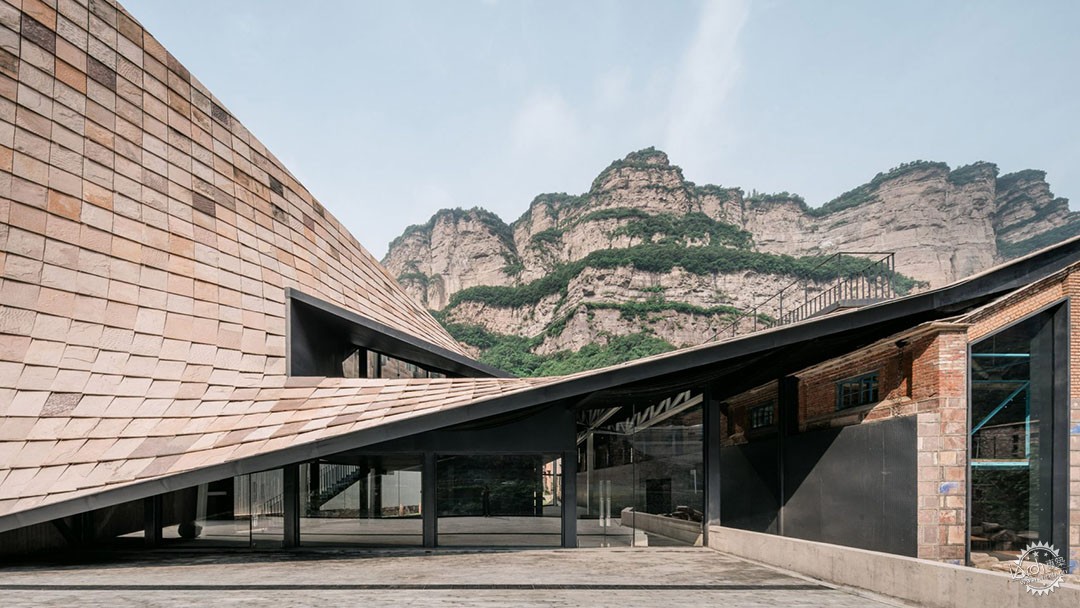
Sculptural roof helps Taihang Xinyu Art Museum blend into mountainside
由专筑网NJY编译
中国的王冲工作室运用乡村风格的石墙和倾斜的屋顶,使这座艺术博物馆完美融入了中国河南省当地山石林立的基地地貌。
这座美术馆被命名为太行 · 新宇美术馆,建在场地上的一座旧仓库的周围,背靠太行山,靠近沧溪河。
王冲工作室回收使用了来自当地的石材,并通过保存场地上现有的仓库来强调场地所在的整片城市区域的历史记忆。
Chinese practice Wang Chong Studio used rustic stone walls and a sloping roof to help this art museum blend into its rocky site in China's Henan Province.
Named Taihang Xinyu Art Museum, the museum is built around an old warehouse on the site, which backs onto Taihang Mountain and sits alongside the Cangxi River.
Wang Chong Studio used recycled local stone and preserved the existing warehouse to highlight the history of the region.

建筑师在美术馆屋顶上使用了极具辨识度的瓦屋顶结构,使得整个建筑仿佛是从周围环境中生长出来似的。
“我们选择了转换而非彻底拆除,通过保留场地上原有的仓库,从而更有效地彰显当地的历史遗产,文化身份以及场地本身的背景”,工作室创始人王冲如是说。
“新的建筑体量创造出一种混合多元的设计方法,这种方法比单纯的修旧如旧更有效。”
The architects also topped the museum with a sculptural tiled roof designed to appear to grow out of the landscape.
"The transformed, rather than demolished, warehouses effectively reflect heritage, identity and the site's background," studio founder Wang Chong told Dezeen.
"The new building volume that surrounds it creates a hybrid method that is more effective than tabula rasa or 'repairing the old as the old'."
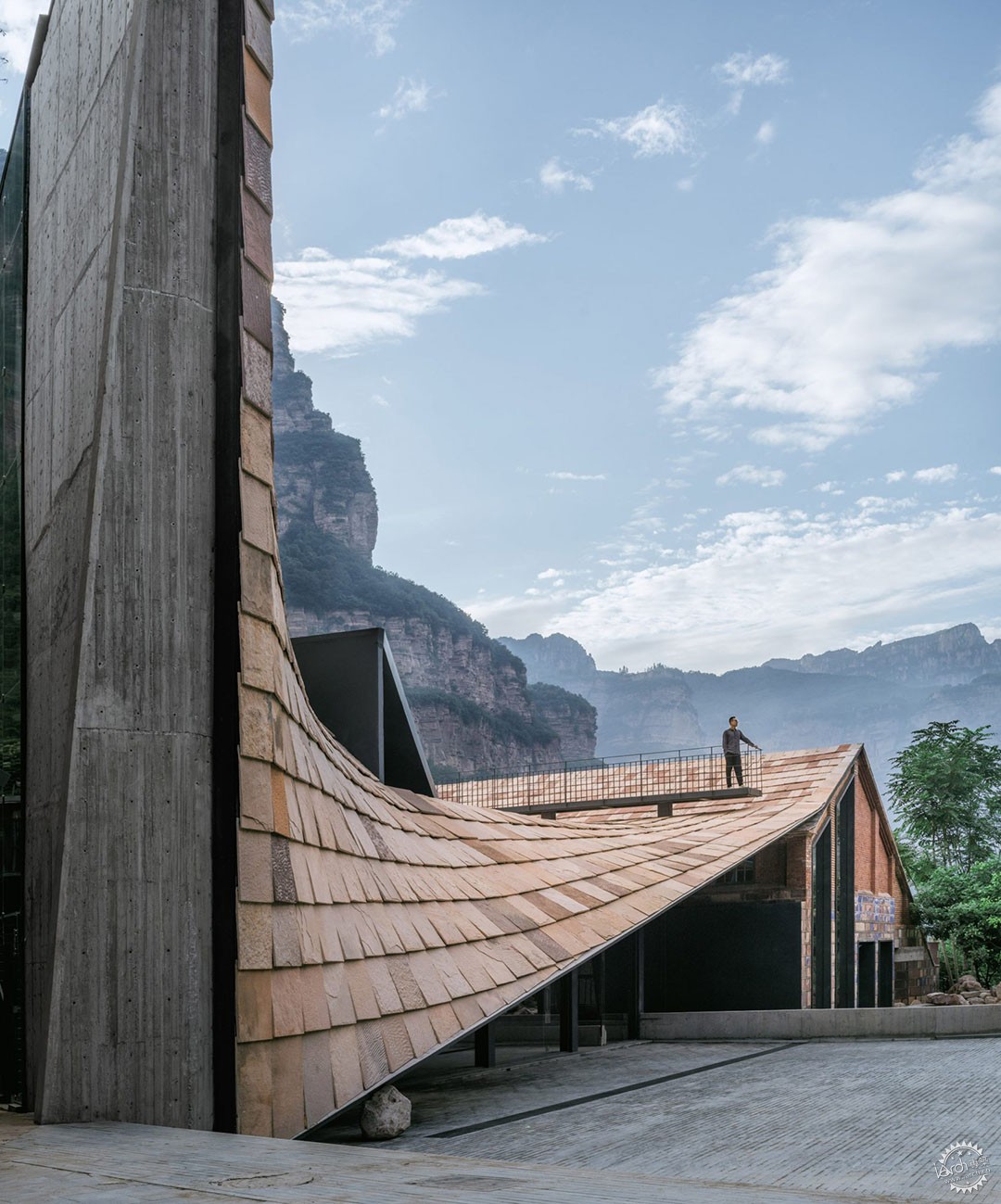
场地前方设计了一个由当地特有石材砌筑的滨水庭院,以及一条由台阶构成的小径,直达美术馆,同时游客也能俯瞰下方的河流。
“我们从中国传统山水画中层层叠叠的山路中吸取灵感,在场地旁的水边和山边设计了层层退台以及蜿蜒的山路,”
At the front of the site, a waterside courtyard with existing stone elements and stepped paths leads to the museum and offers views down the river.
"Traditional Chinese landscape paintings try to describe the paths into the mountains layer by layer, which inspired us to design layers of retreats and zigzag mountaineering paths in the site adjacent to the water and back of the mountain," said Wang.

美术馆的下方设计了一个由挖掘山地形成的餐厅,餐厅设置了大片的落地玻璃,游客可以看到旁边的庭院。
餐厅的室内空间被一片片混凝土挡土墙和毛石墙体分隔,这些石材都是建筑师在山体挖掘过程中特意收集的。
建筑师使用当地特有的红色砂岩来制作餐厅的水磨石地面,同时在整个餐厅设计中也大量使用到当地特有的一些材料。
“我们希望从材料角度出发进行设计,尊重并体现当地特有的自然材料特性。”
“整个建筑采用‘干挂石材’的建造方式,我们收集了大量当地传统建筑屋顶上使用的石板”,建筑师接着说。
“大多数建造过程都是由当地的工匠完成的,因此可以说整个建筑融合了当立的工匠传统,同时在最大程度尊重当地自然材料的真实特质。”
A restaurant is built into an excavated portion of the hillside below the museum, where large floor-to-ceiling windows offer views of the neighbouring courtyard.
Punctuated by concrete retaining walls, the restaurant sits between a series of rugged stone walls and features large stones which the studio added to the design during the excavation process.
Local red sandstone was used to create the restaurant's terrazzo floor, along with additional local materials that feature throughout the design.
"We hoped to work from the material point of view and respect the real quality of local natural materials," said Wang.
"The building adopts the construction method of dry-hanging stone slabs, for which we recycled a large number of old slate slabs that were used as roofing materials for traditional houses," the architect continued.
"Old craftsmen took part in much of the construction, thus embracing the local history of craftsmanship and respecting the authentic qualities of natural materials."

太行 · 新宇美术馆的展览空间位于餐厅的上方,通过一个石材台阶连通,展览空间之间通过毛石墙面分隔。
展览空间以展现场地原有的要素为主,包括一整块用于支撑展厅夹层钢结构的石材。
Located a level above the restaurant and accessed by a stone staircase, the Taihang Xinyu Art Museum comprises a series of exhibition spaces separated by rugged stone walls.
Inside, the galleries feature existing elements from the site, including a large stone that was extracted from the riverside to support the steel structure of the mezzanine level in one exhibition space.
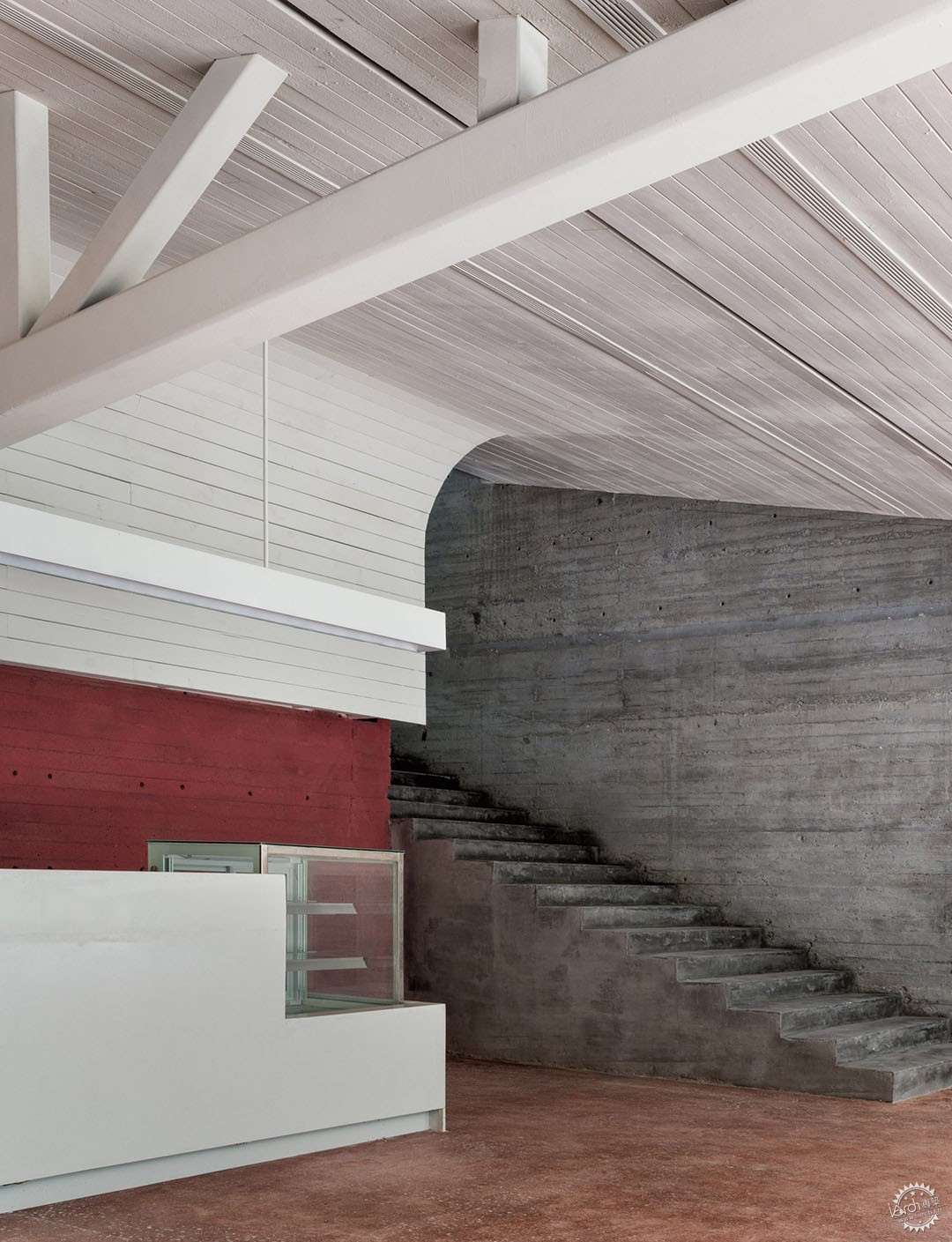
美术馆陡峭的屋顶曲线创造出高低错落的室内空间韵律。
“坡屋顶的灵感来自于中国传统建筑中的大屋顶”,王冲如是说。“在中国传统建筑中,巨大的屋顶形态被比喻为‘大鸟展翅飞翔’,似乎翅膀给人以一种轻盈的感觉。”
A steeply curved roof tops the museum, creating spaces with sloping ceilings that differ in height.
"The sloping roof draws inspiration from the Chinese-style large roof," said Wang. "In ancient Chinese architecture, the large roof is described as 'like a bird spreading its wings and a pheasant spreading its wings and flying', as if the wings bring a light feeling."
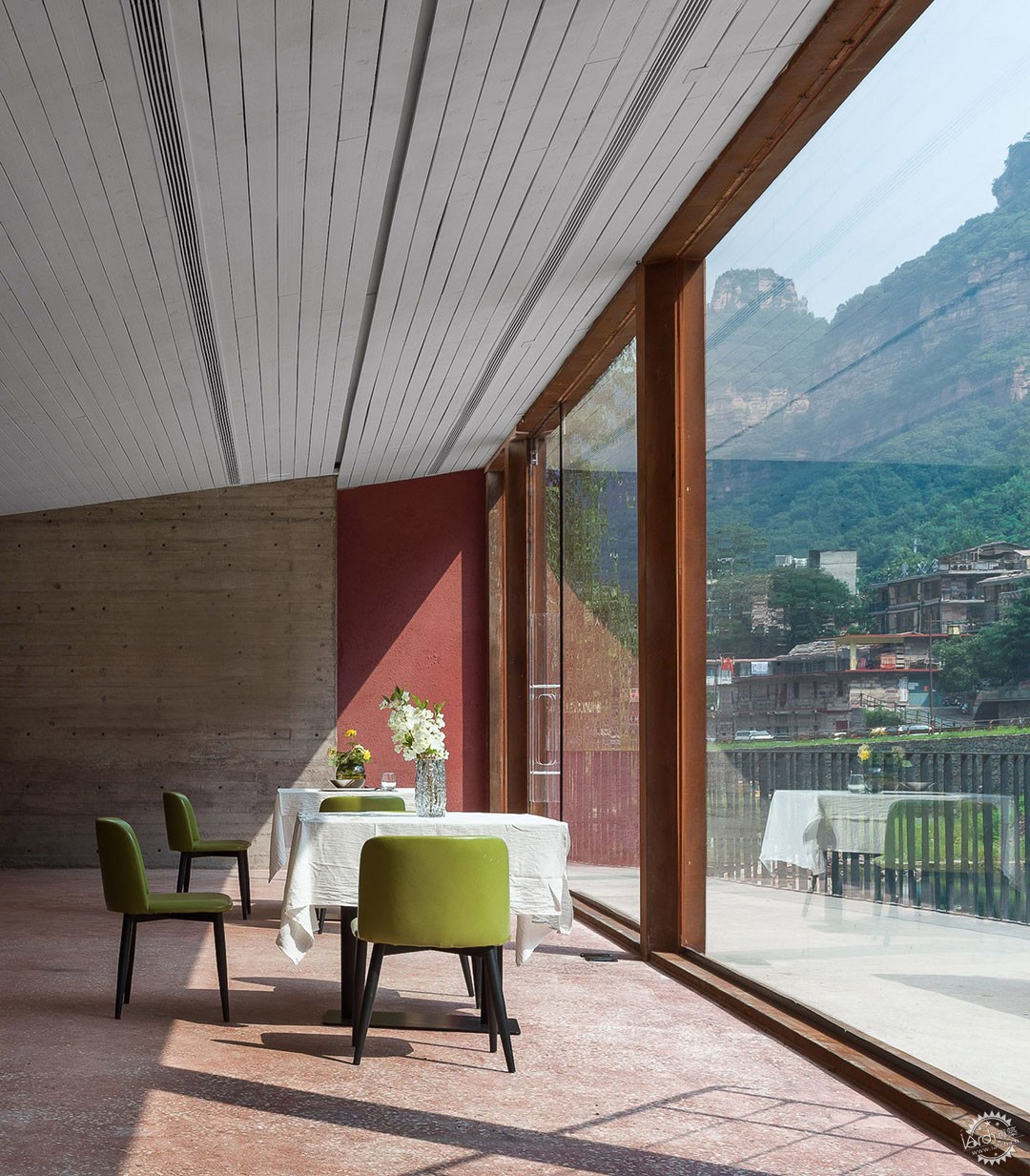
建筑两侧倾斜的高度用以呼应周围建筑的层高,屋顶向外伸展形成巨大的屋檐,作为美术生以及画家绘制远处群山图时候的遮挡。
图片:Coppak Studio
Angled to match the heights of the neighbouring buildings on either side of the structure, the roof extends over the walls of the building to form large eaves, which the studio envisions as a sheltered space for art students and painters to sketch the views of the mountain.
The photography is by Coppak Studio.
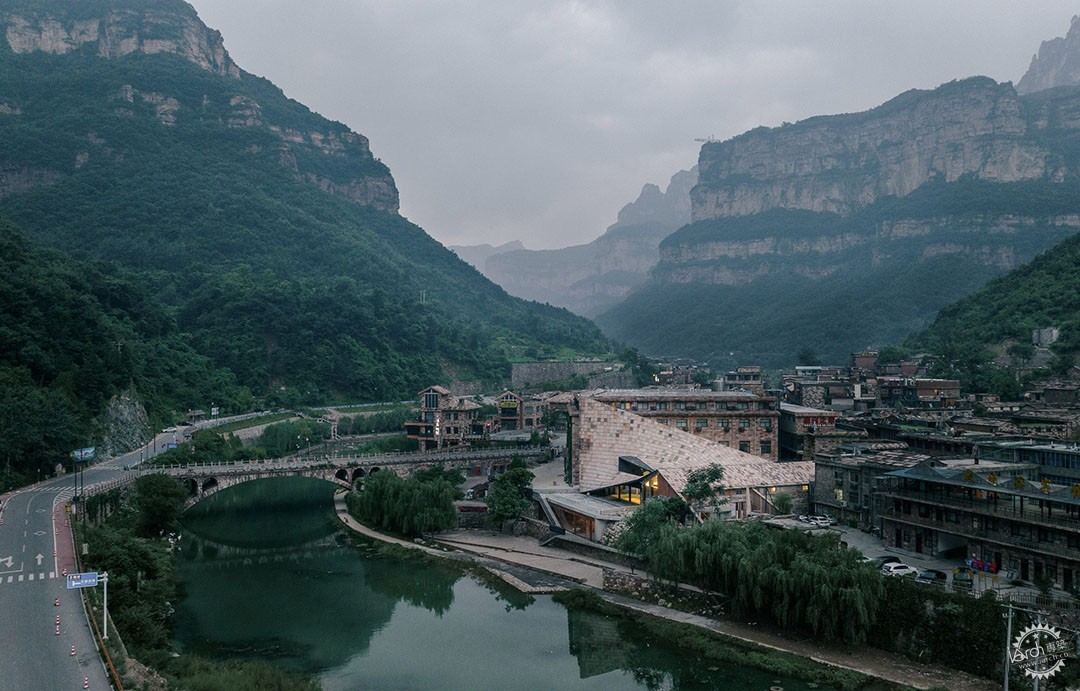
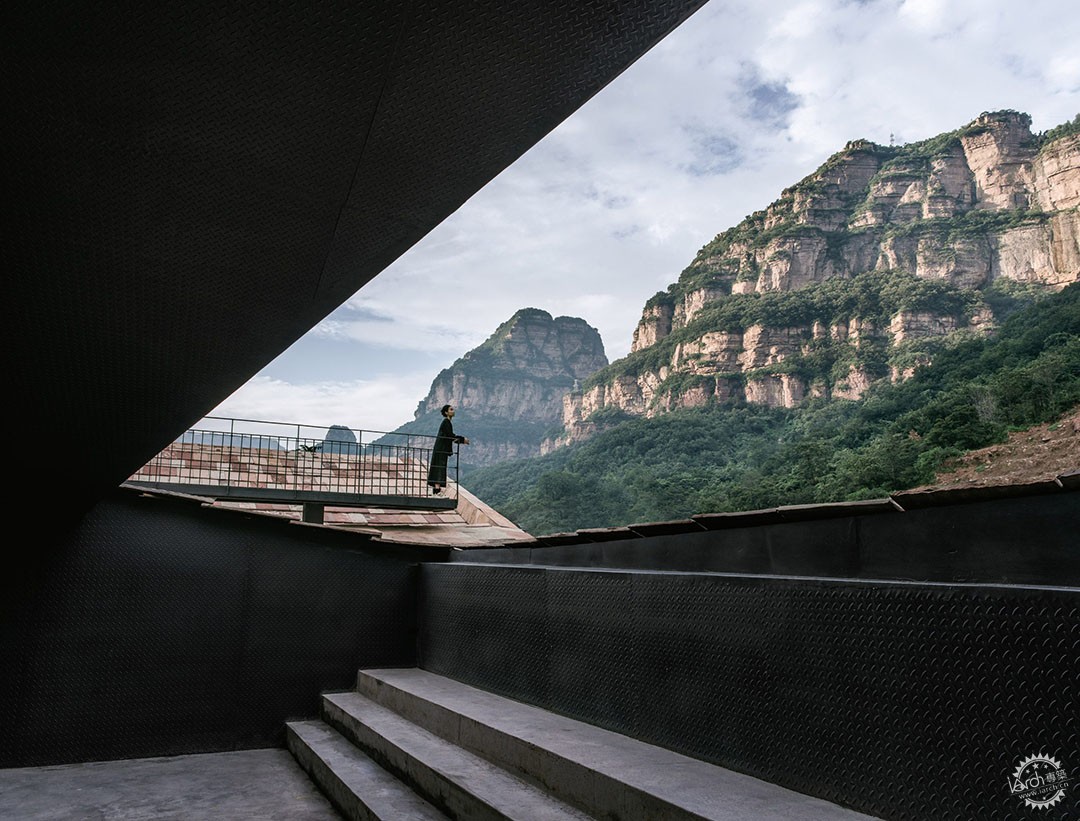
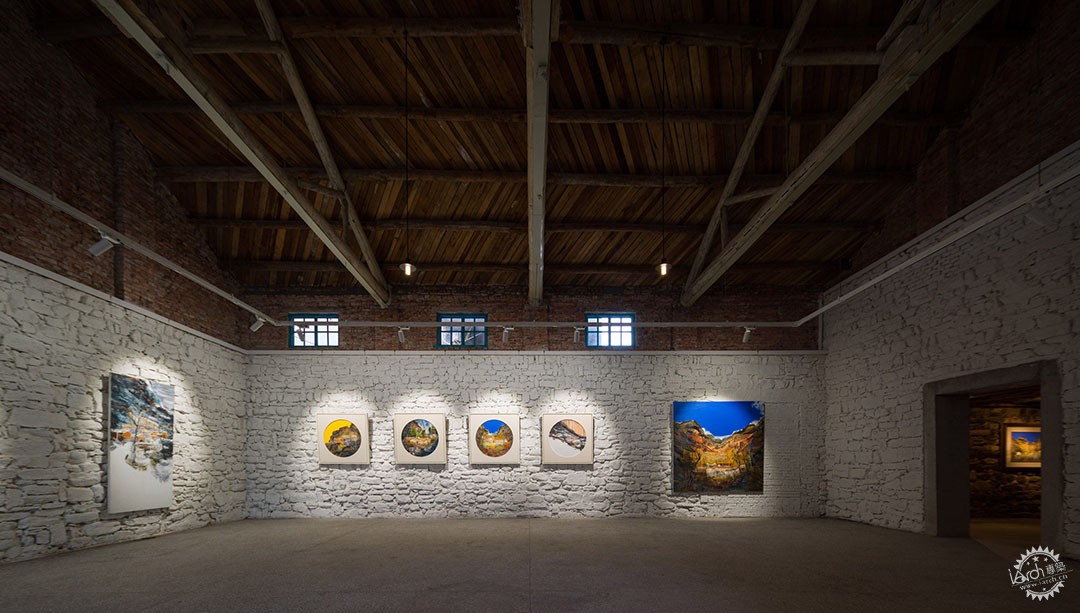
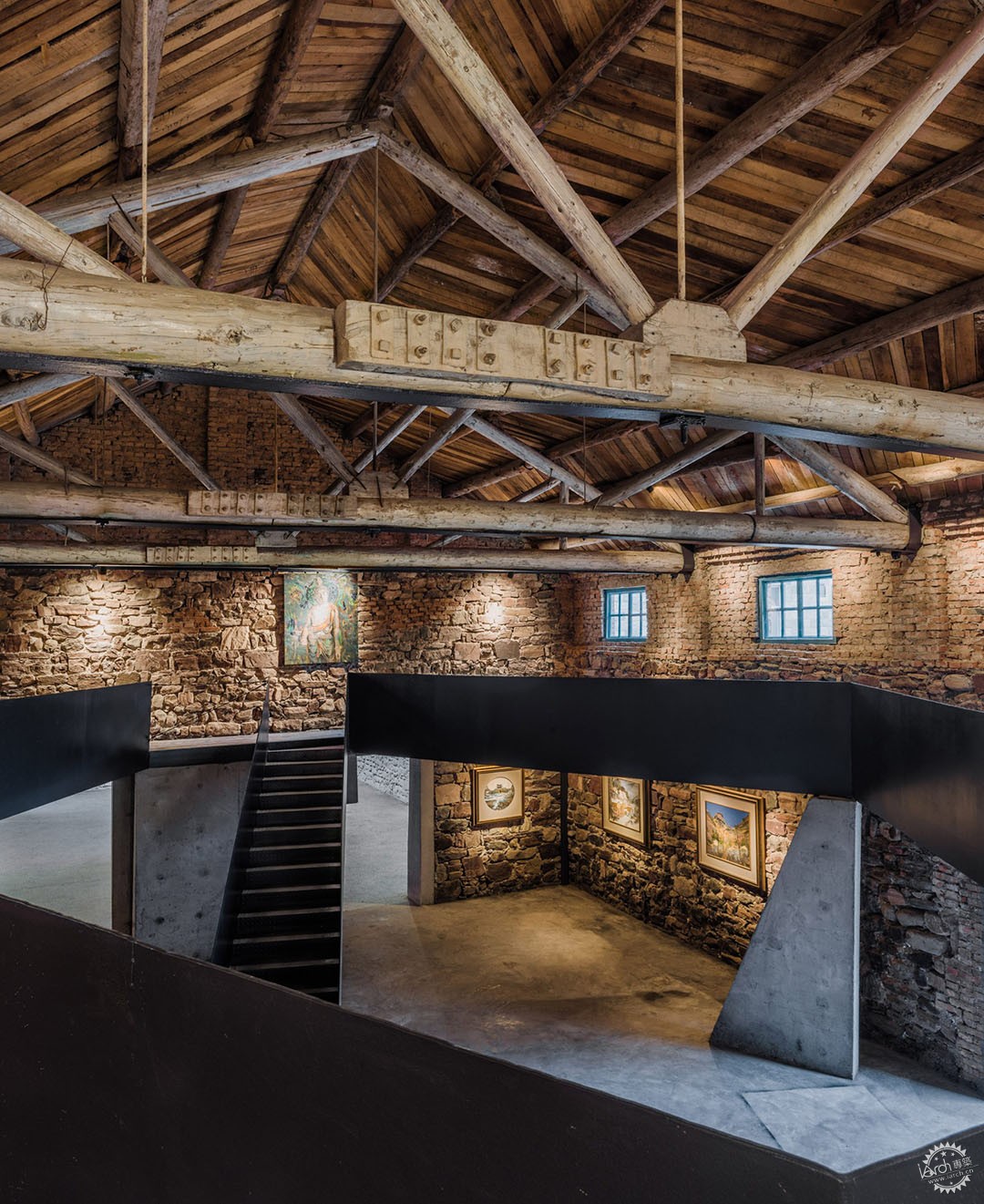
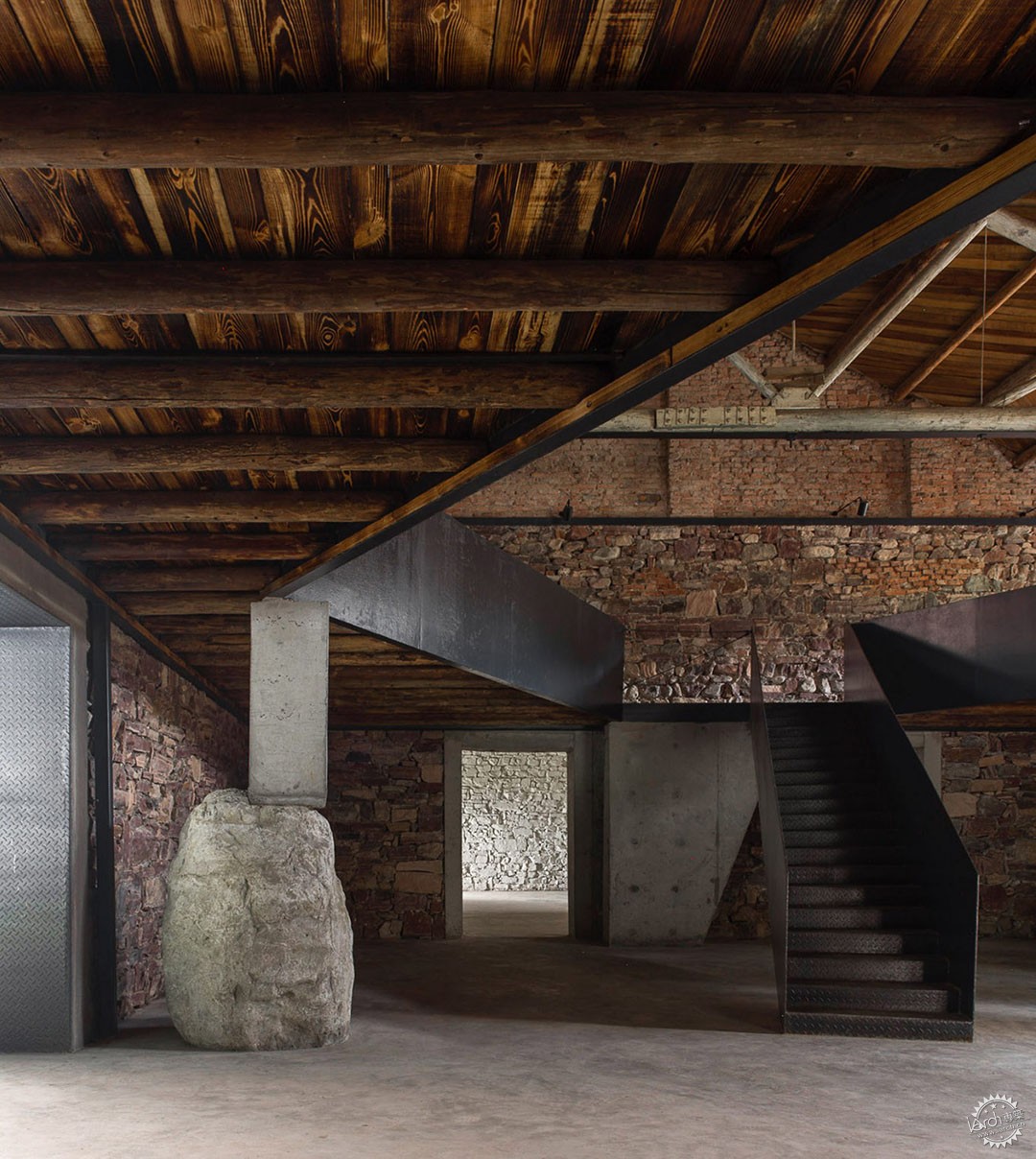
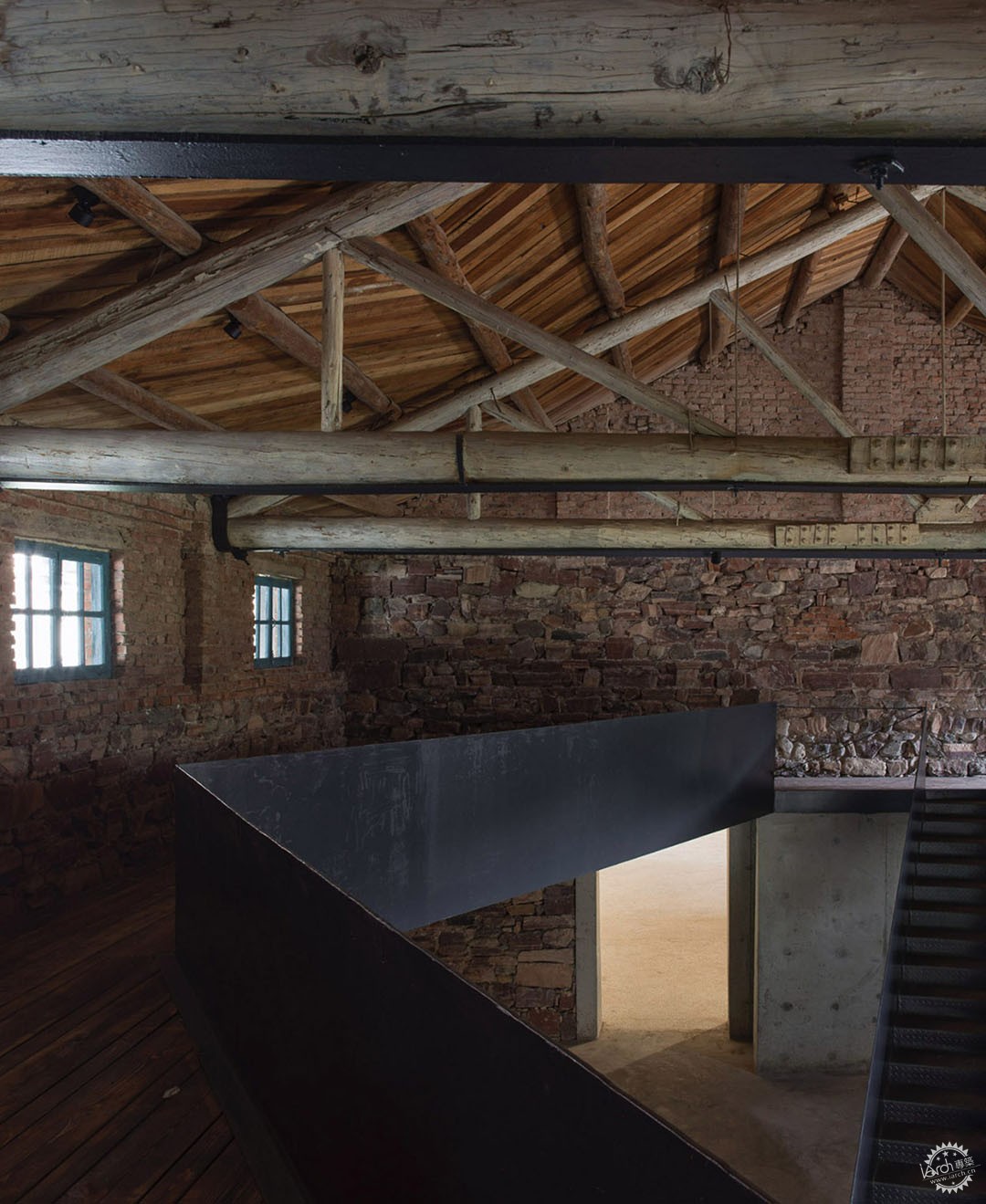

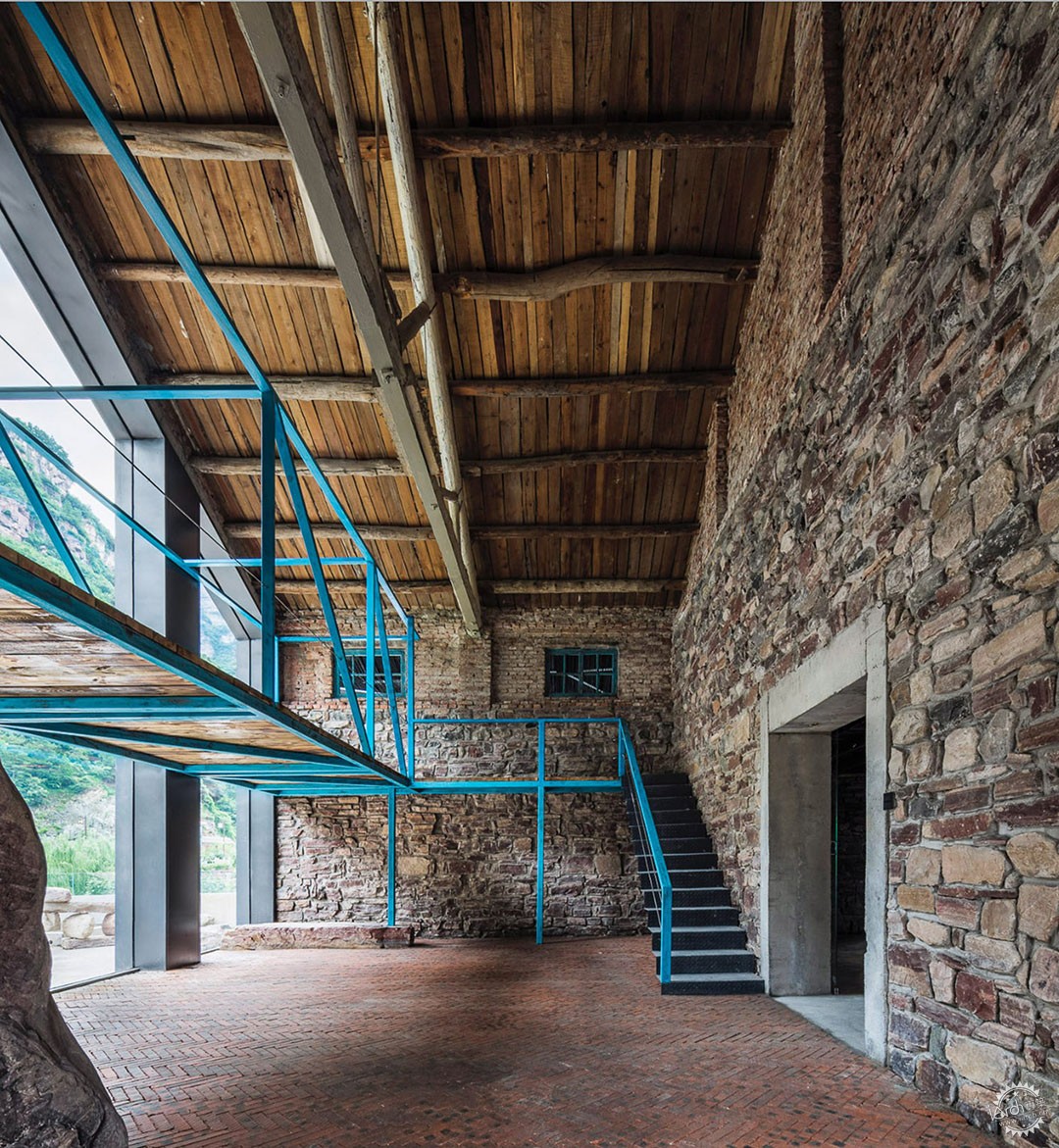
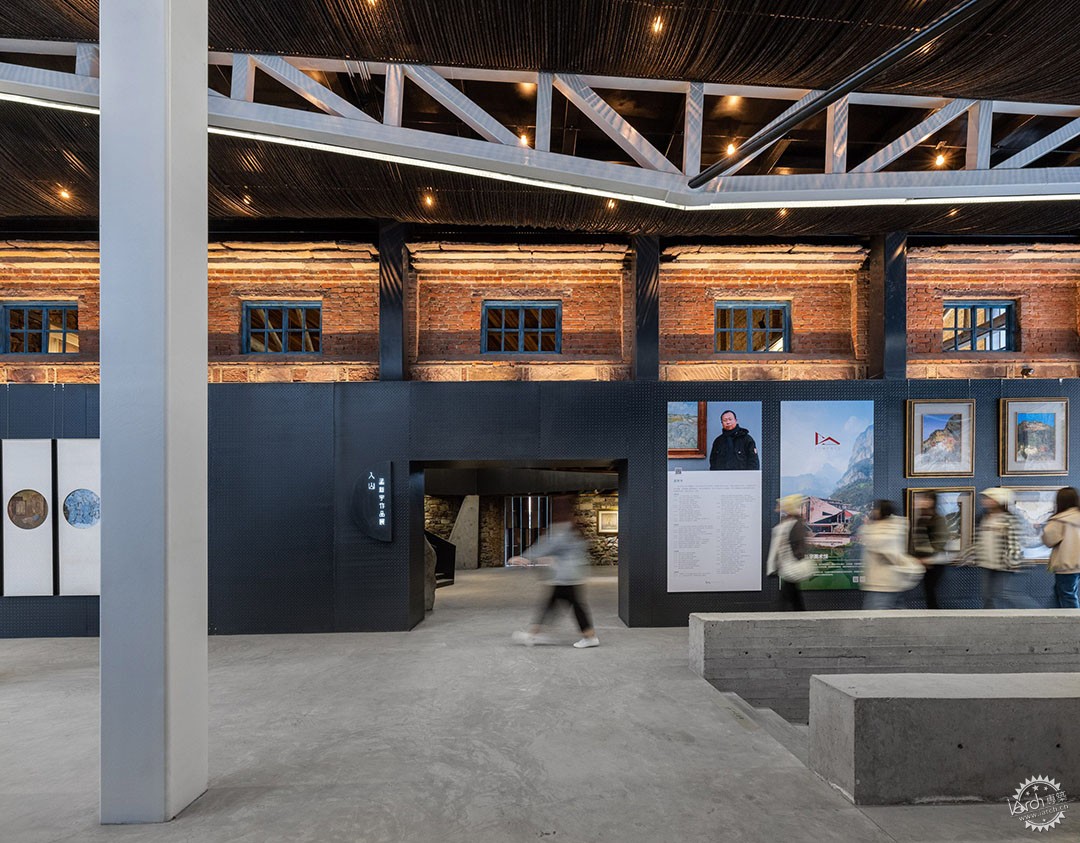
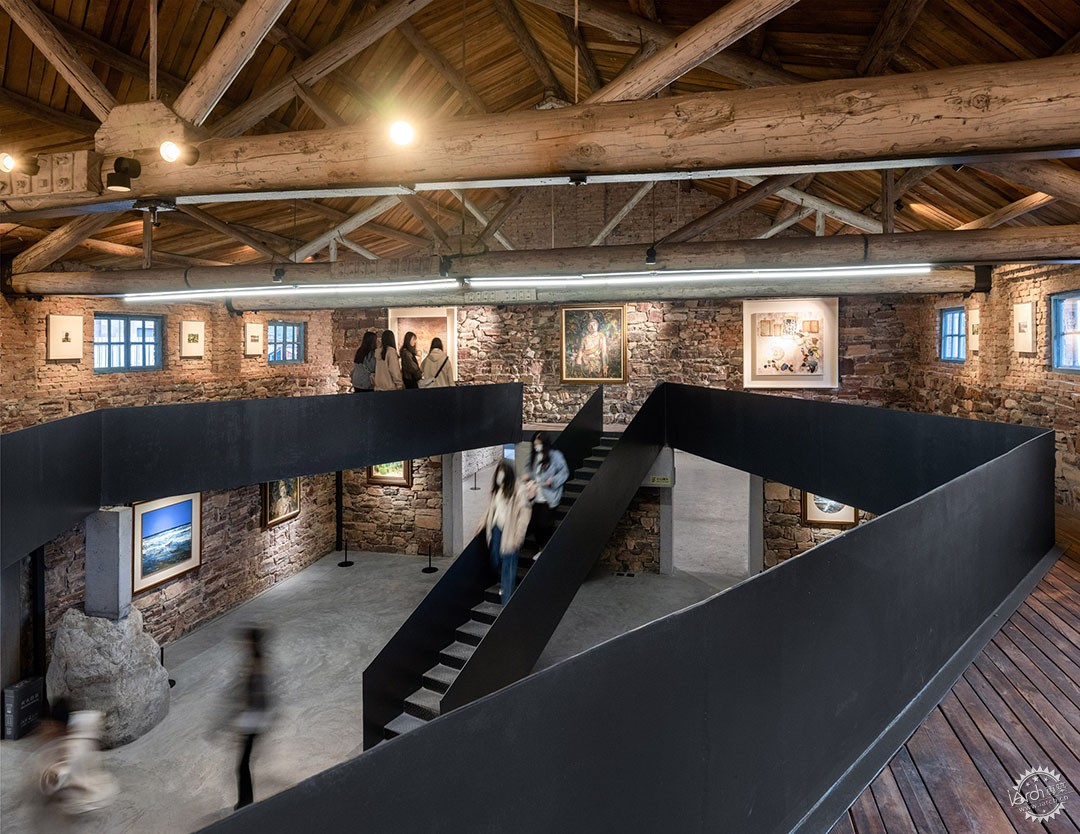
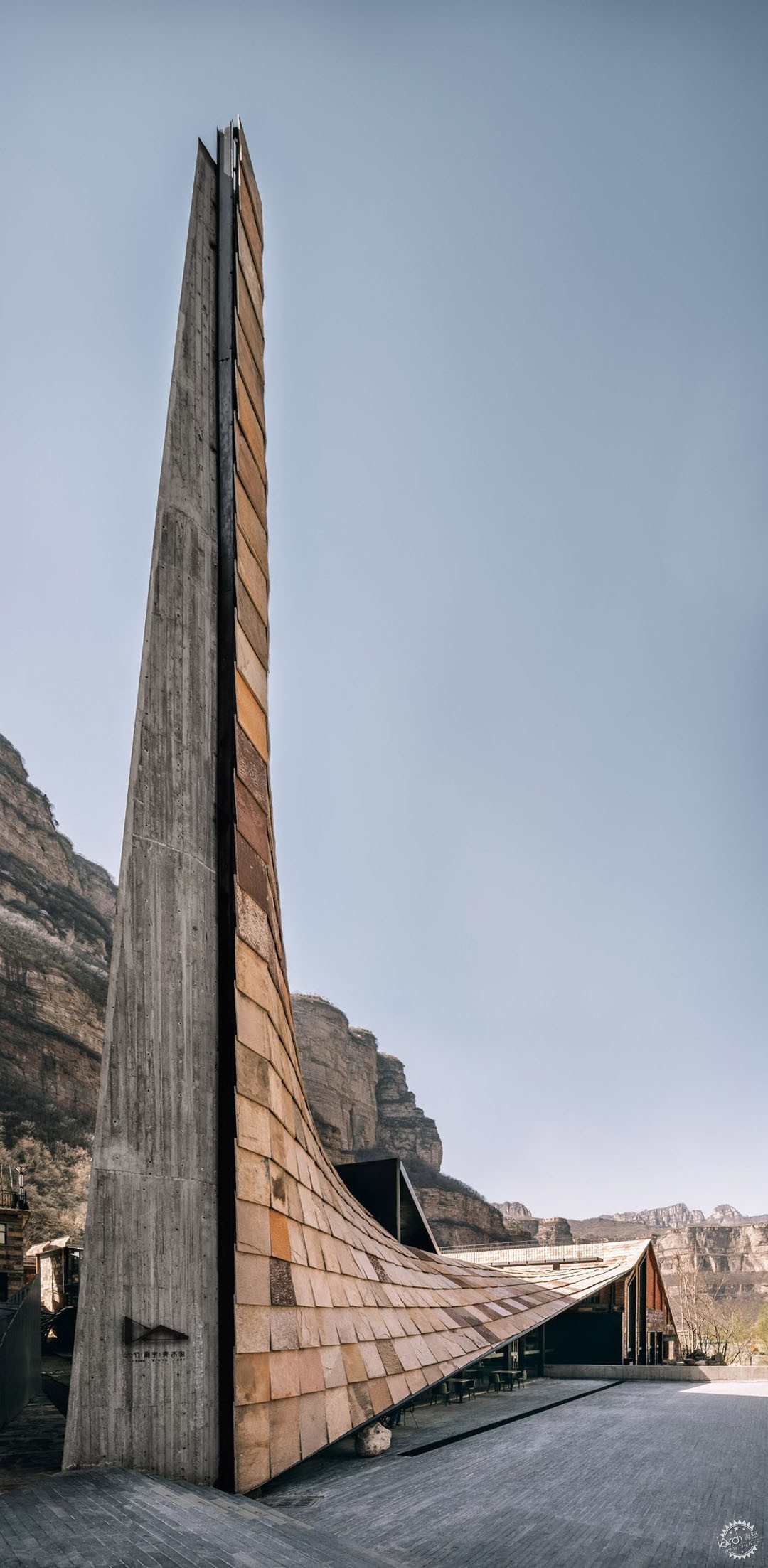
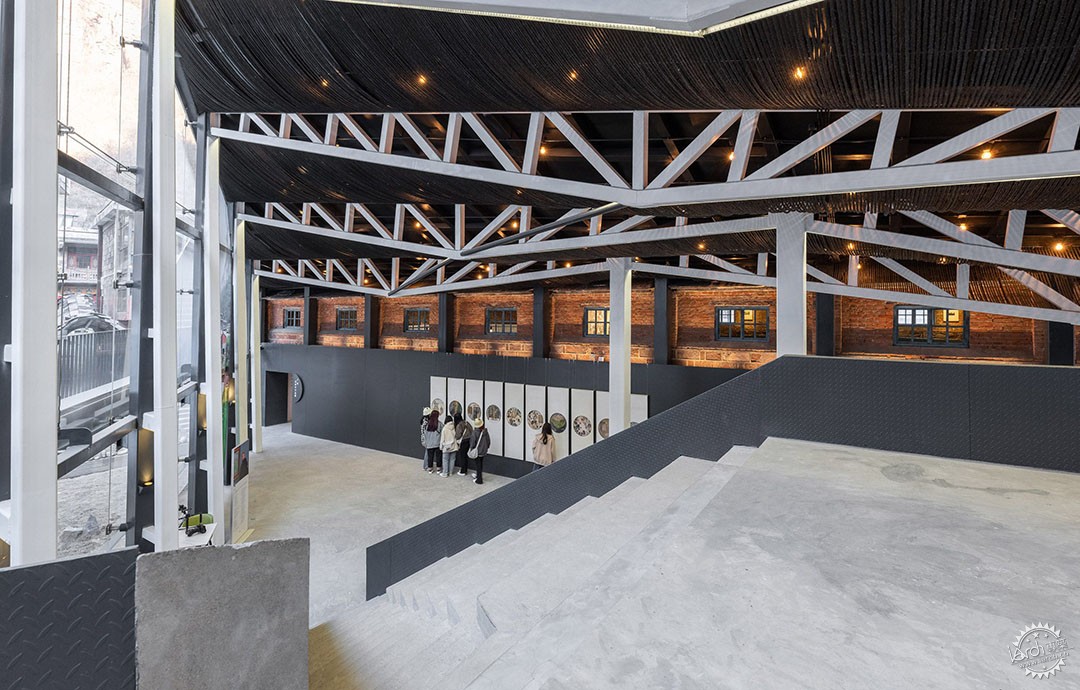
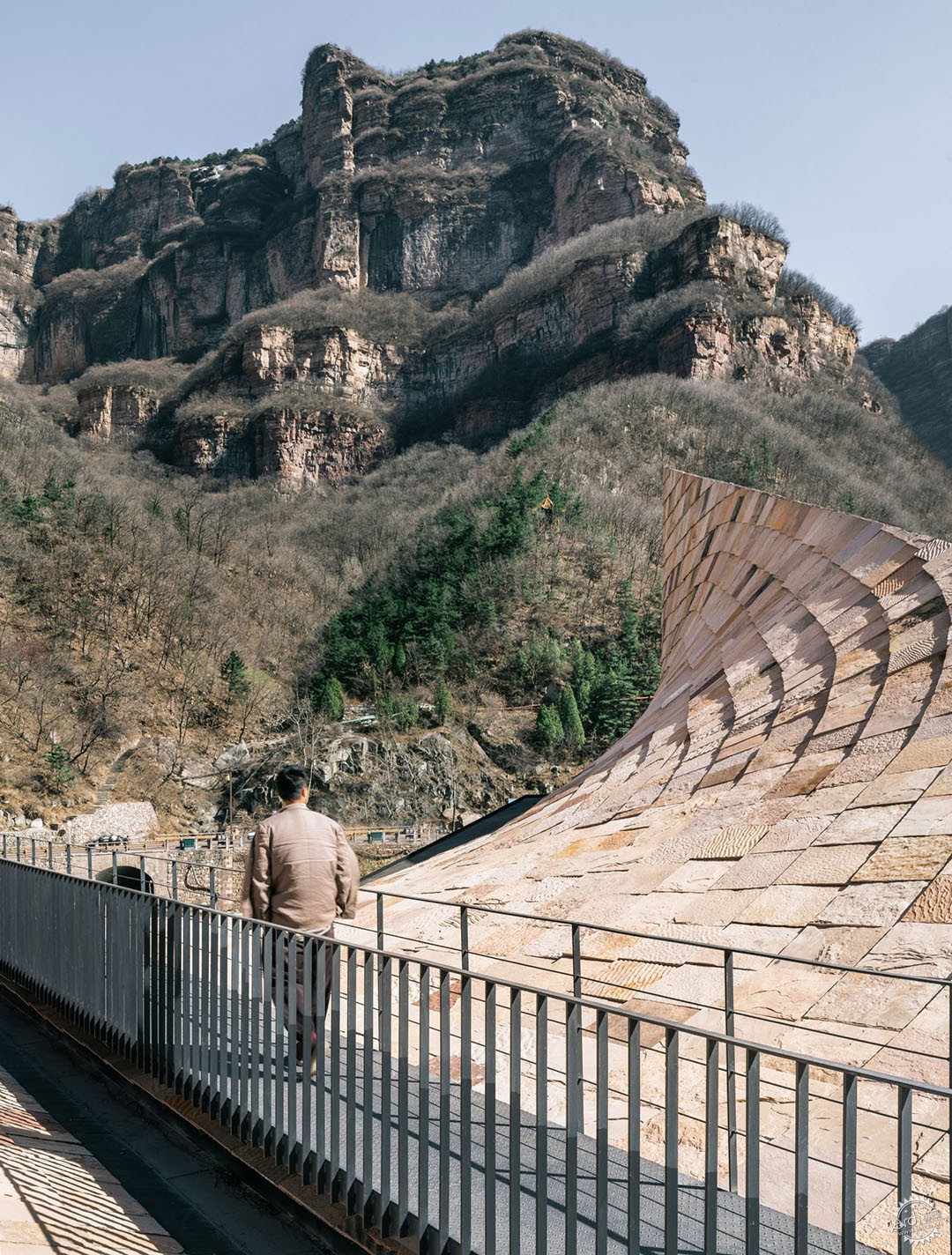
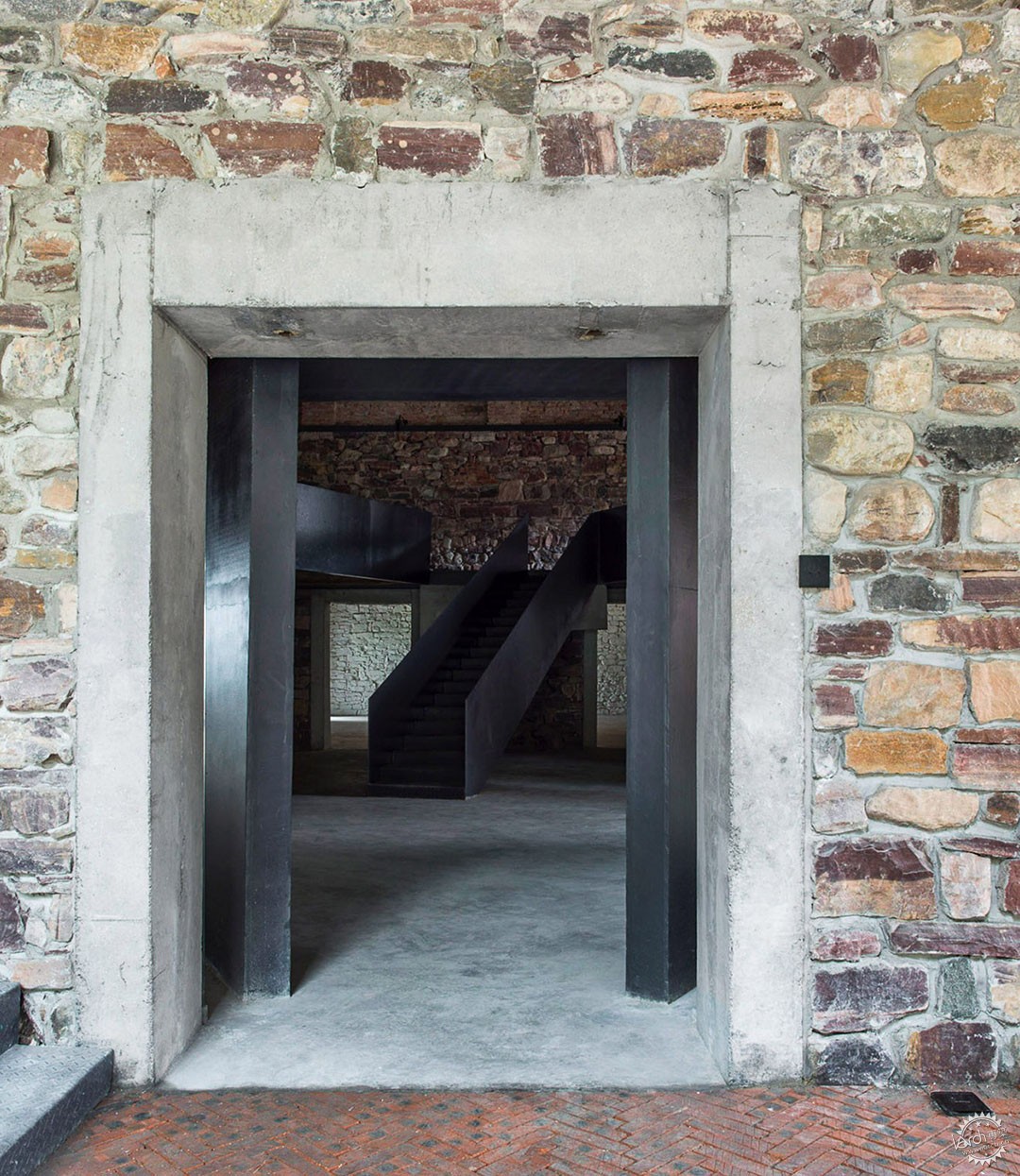
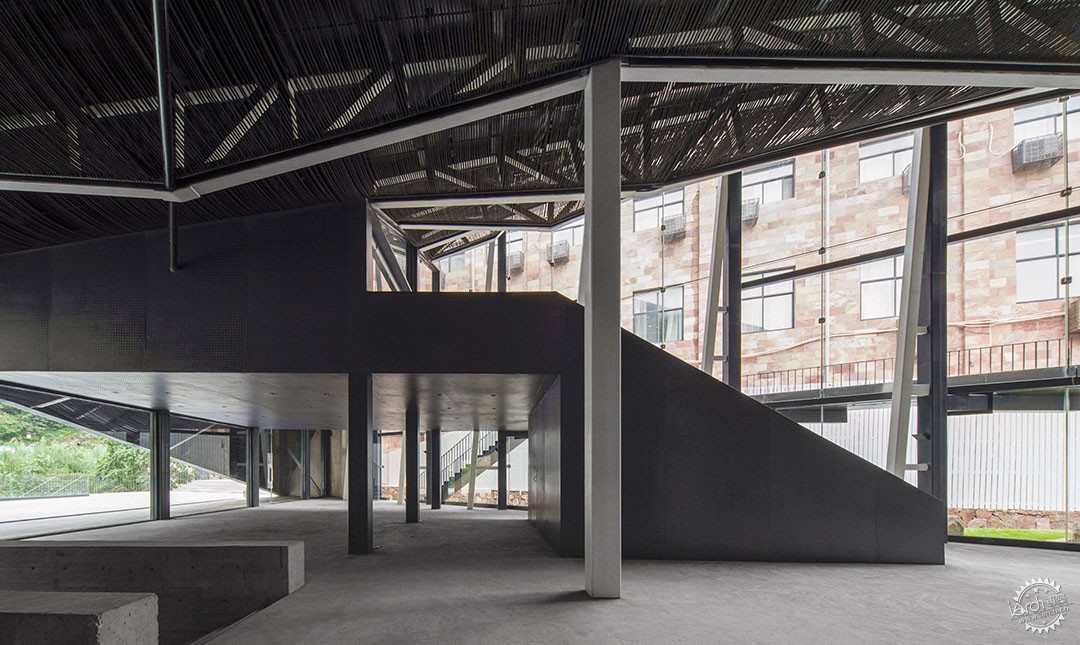
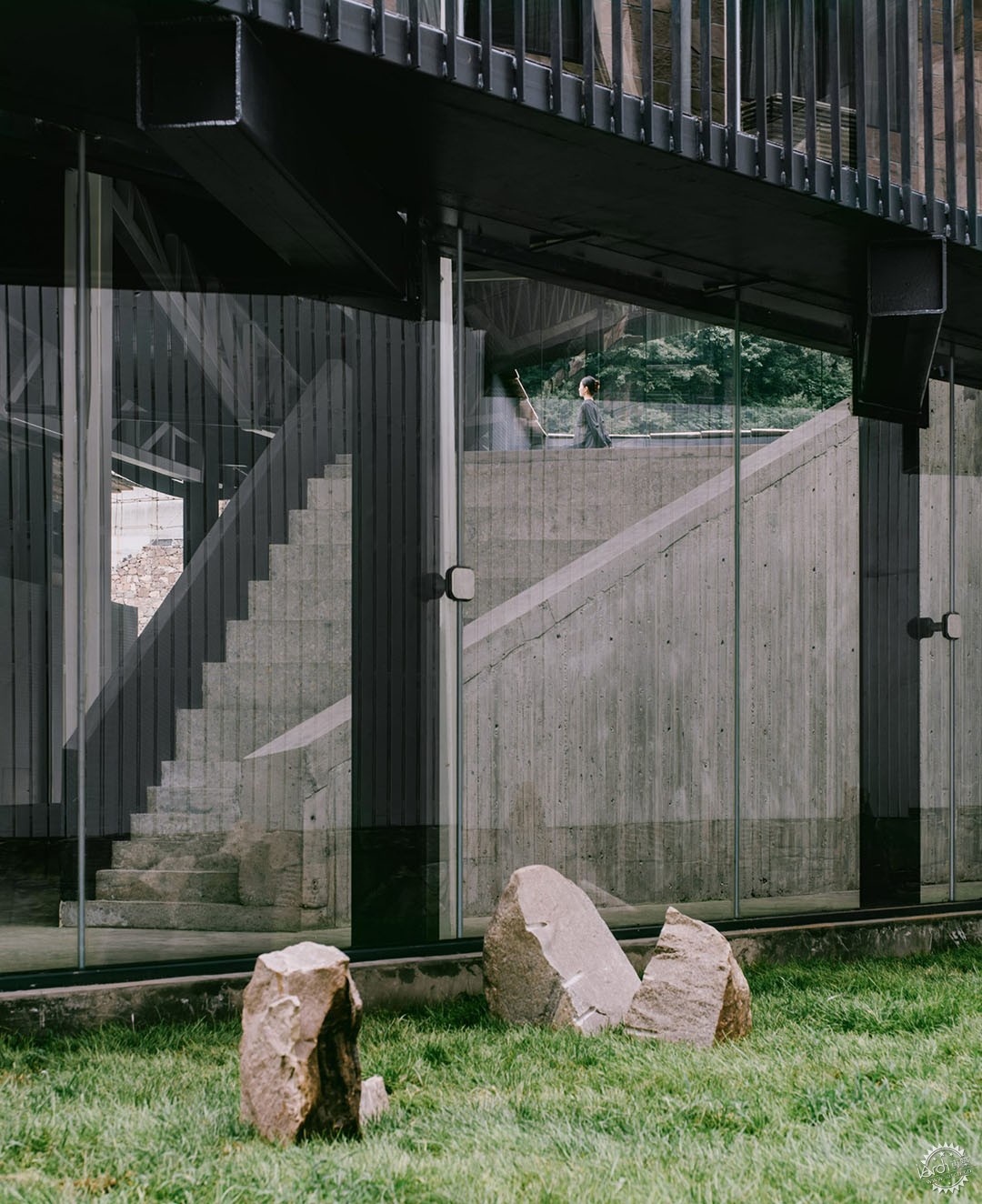
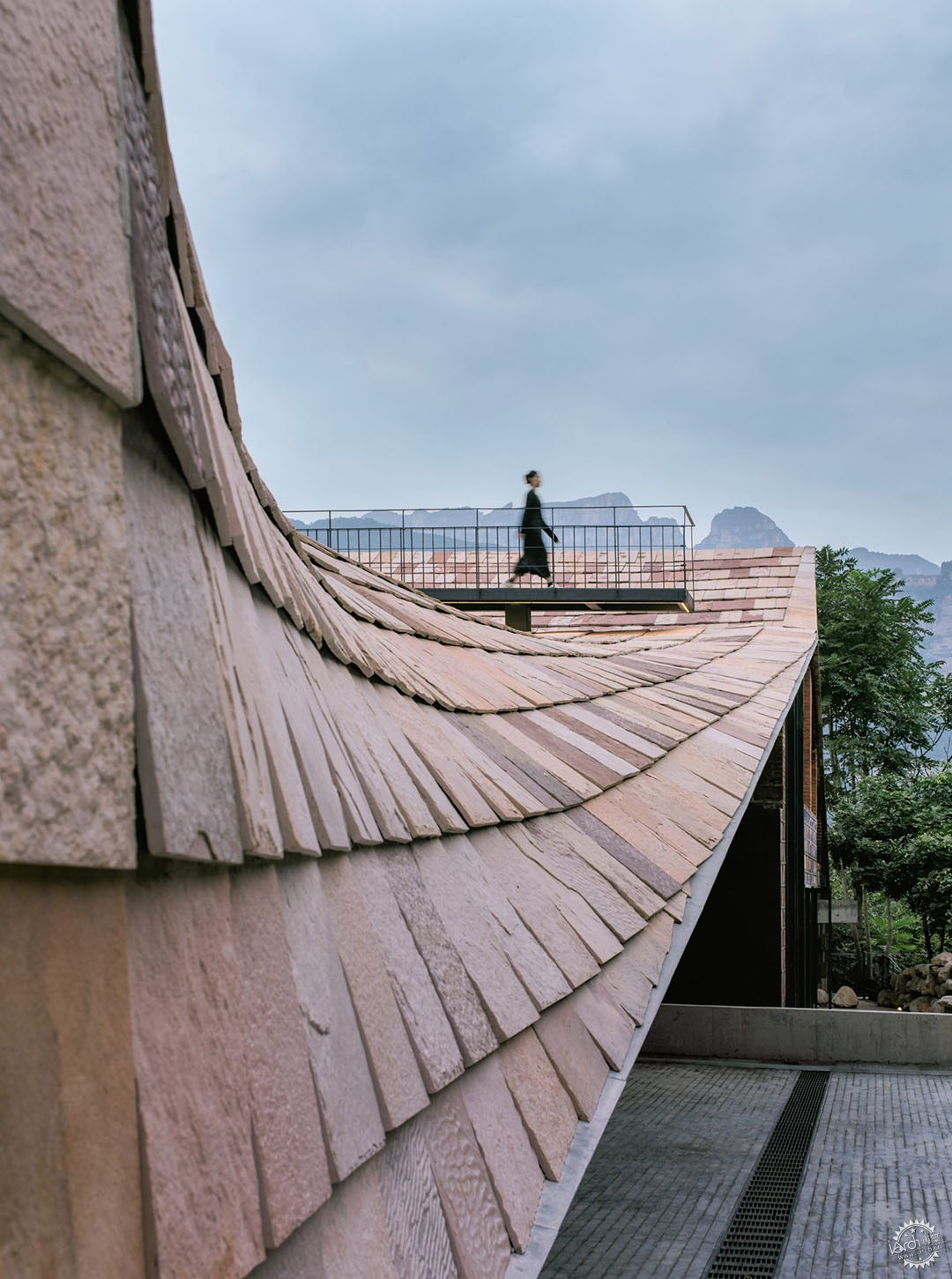
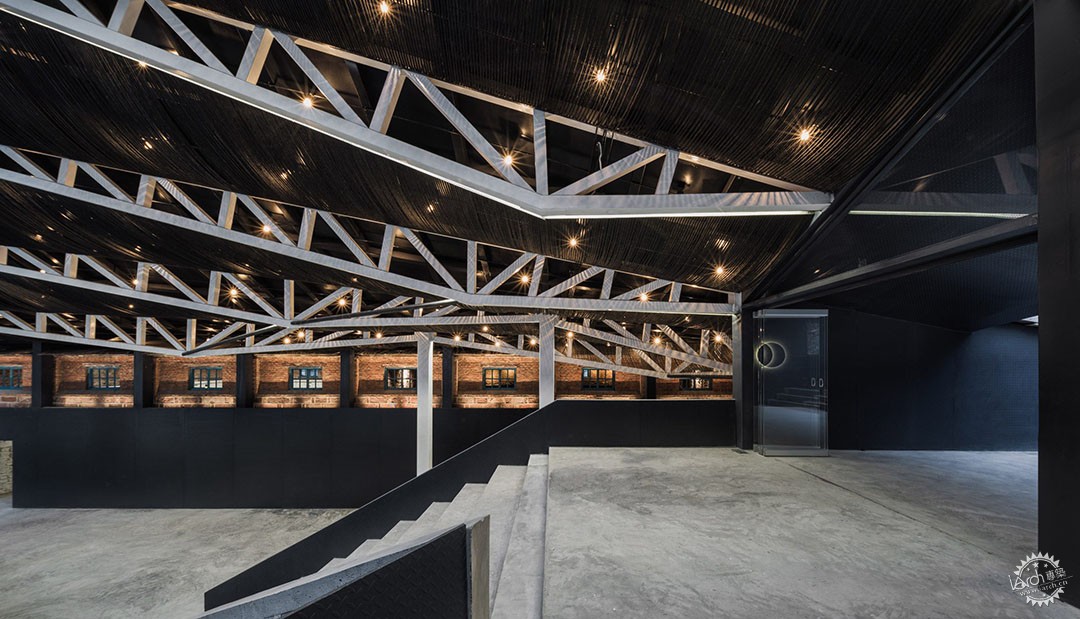
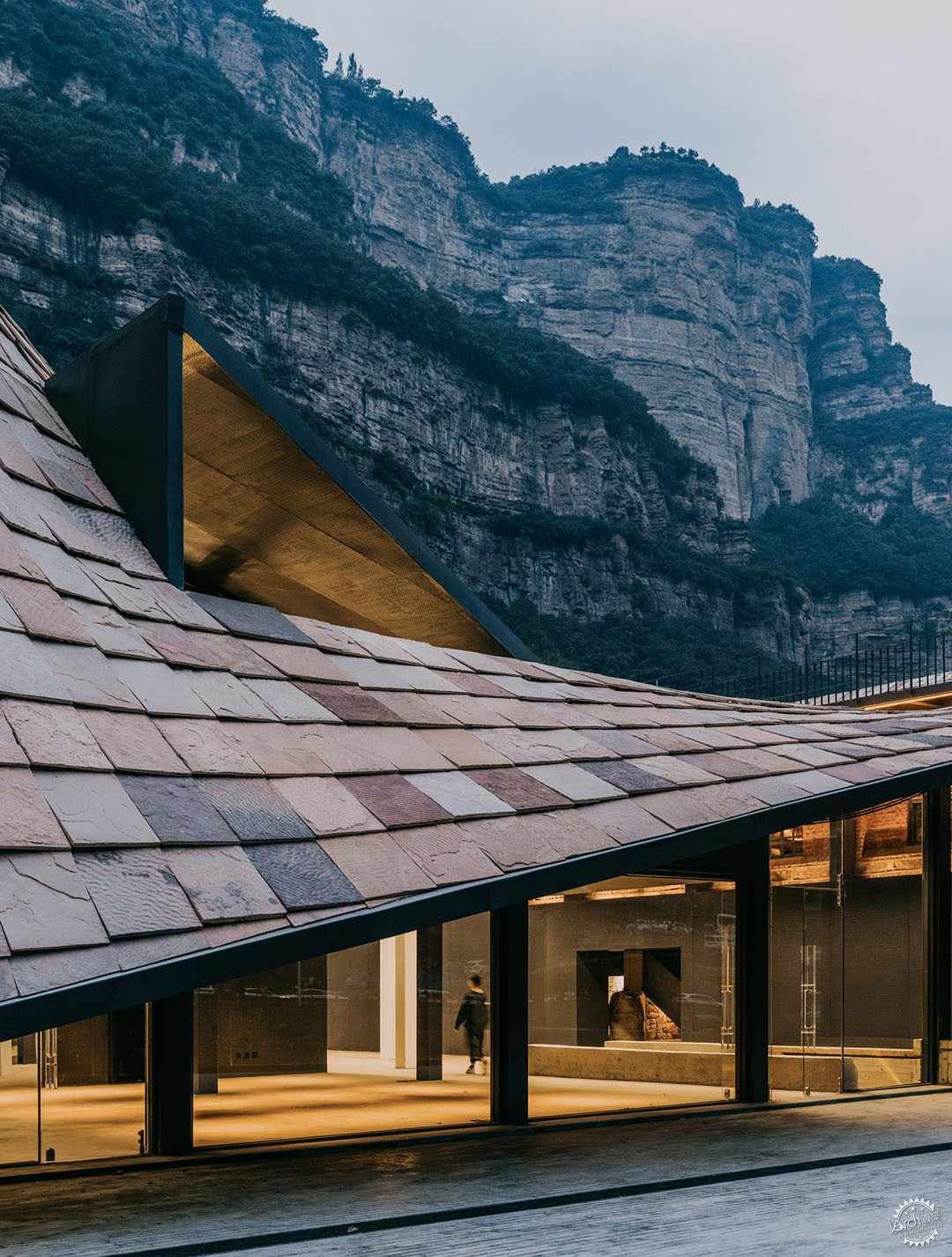

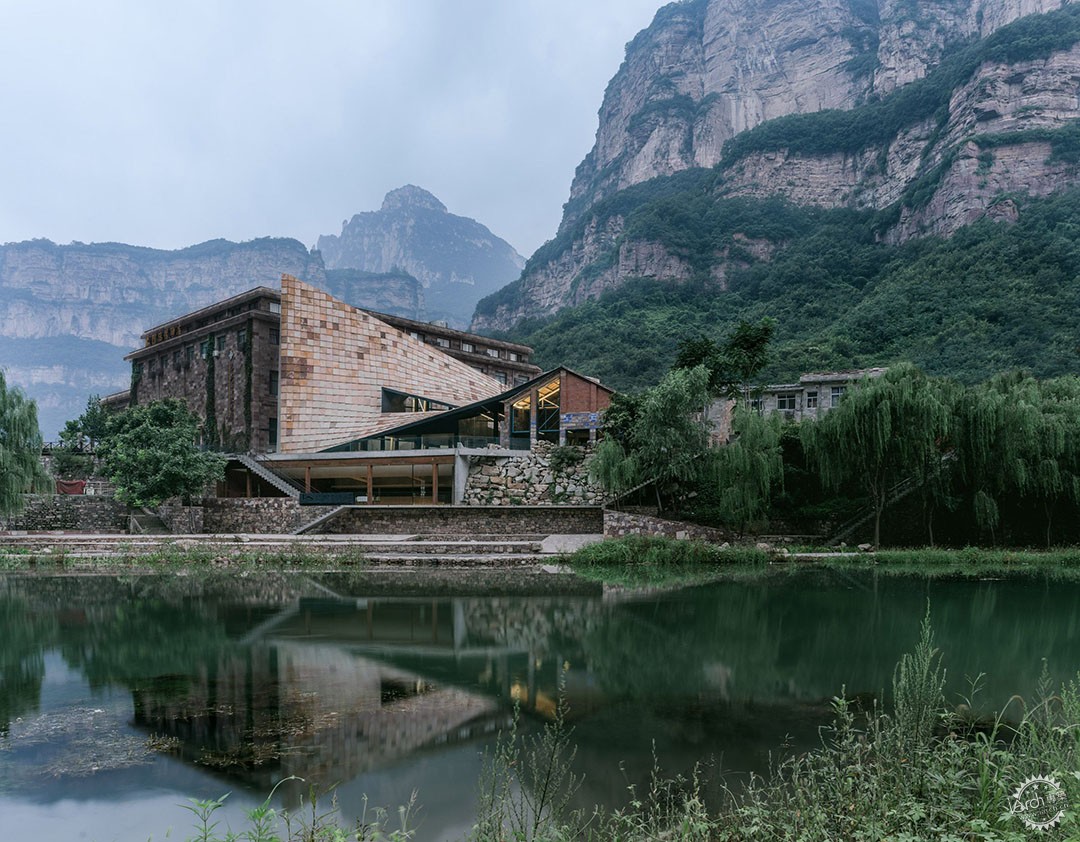
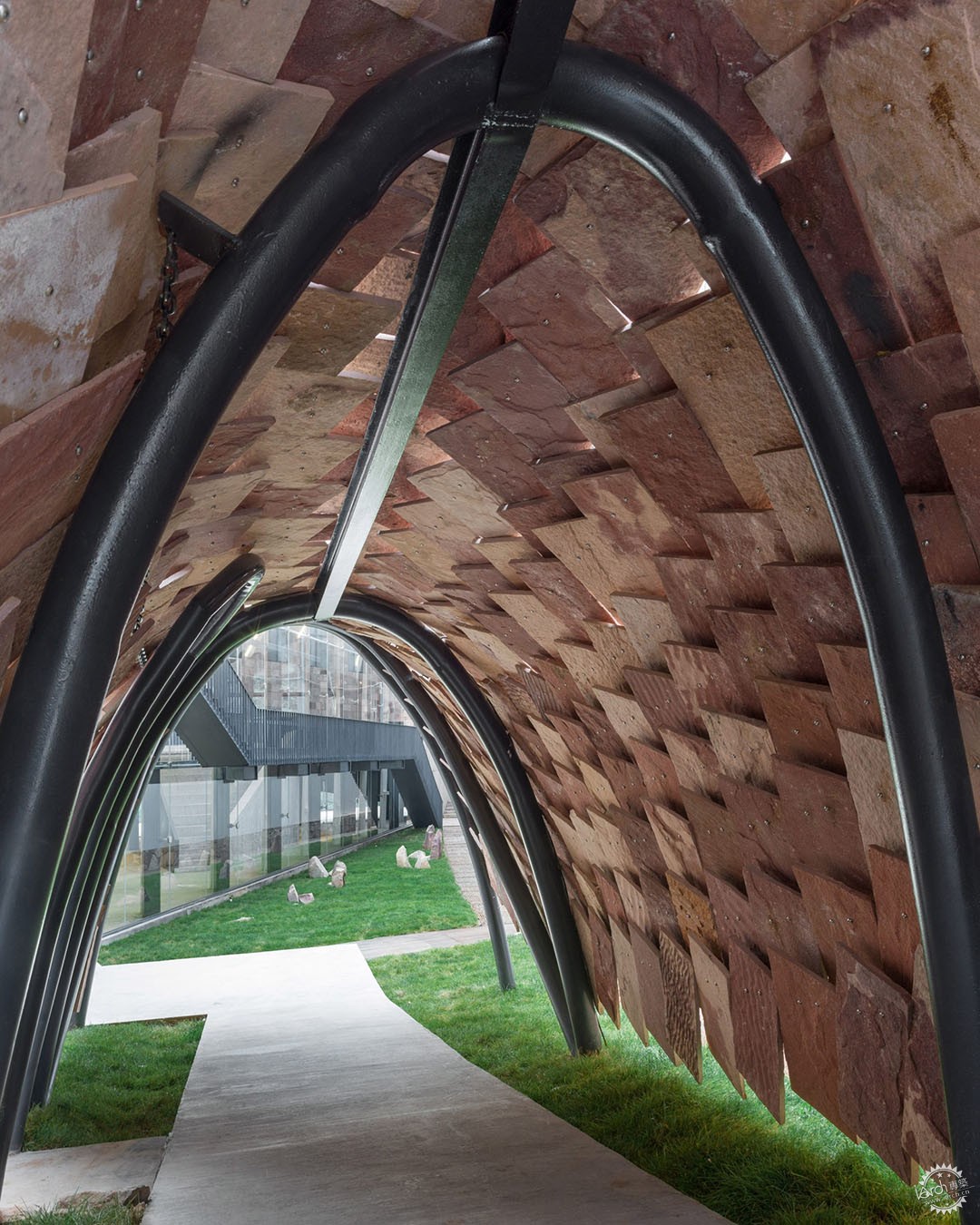
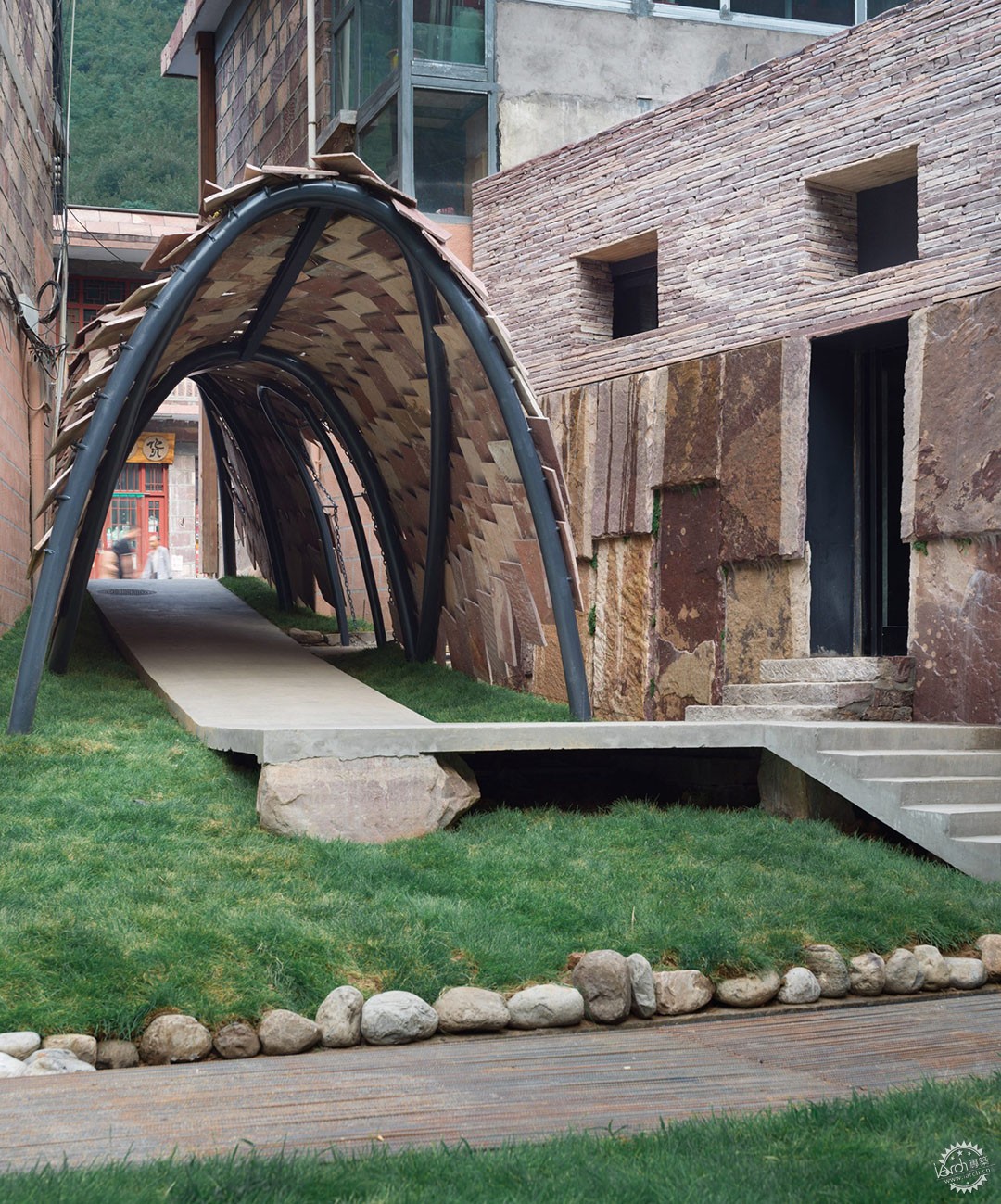
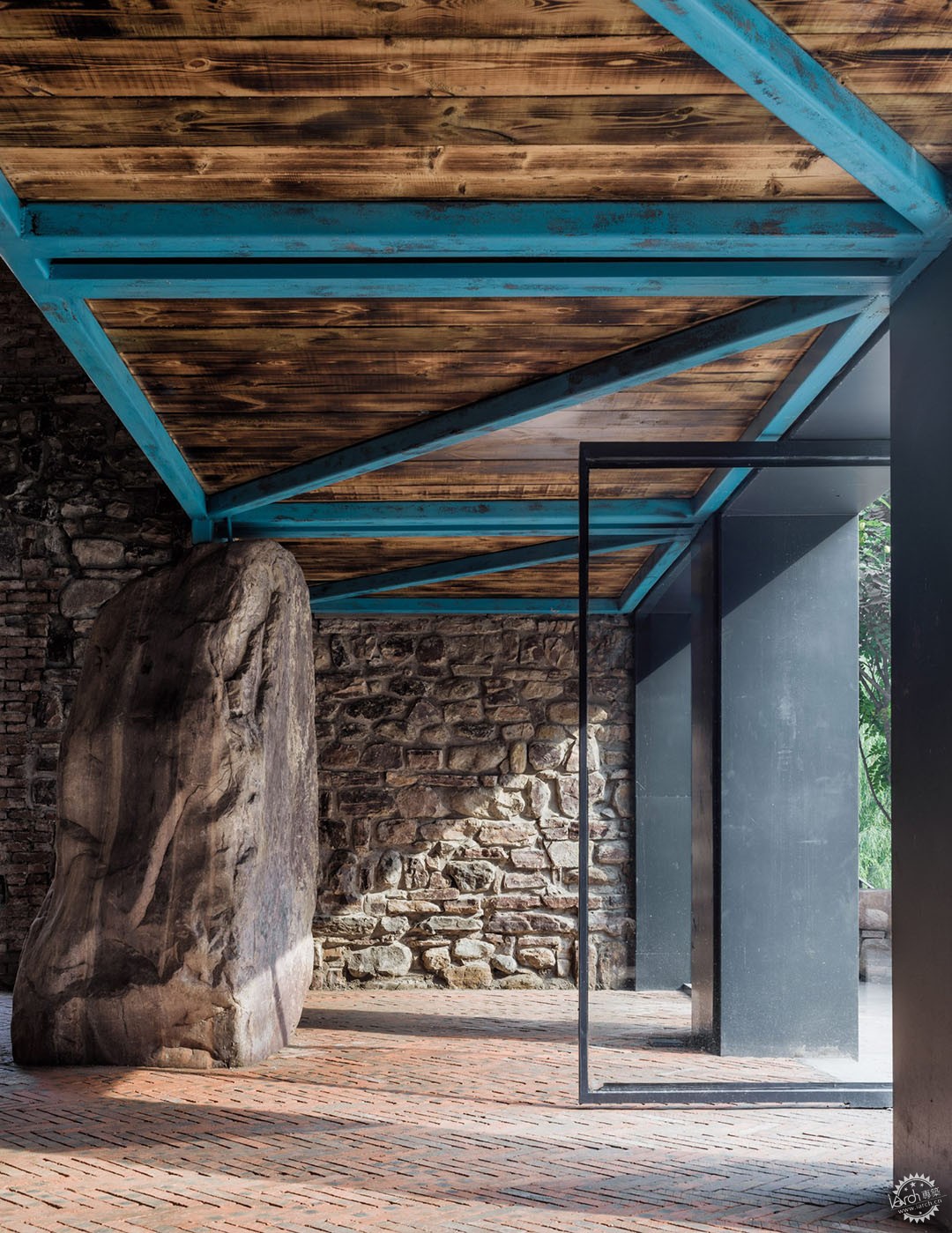
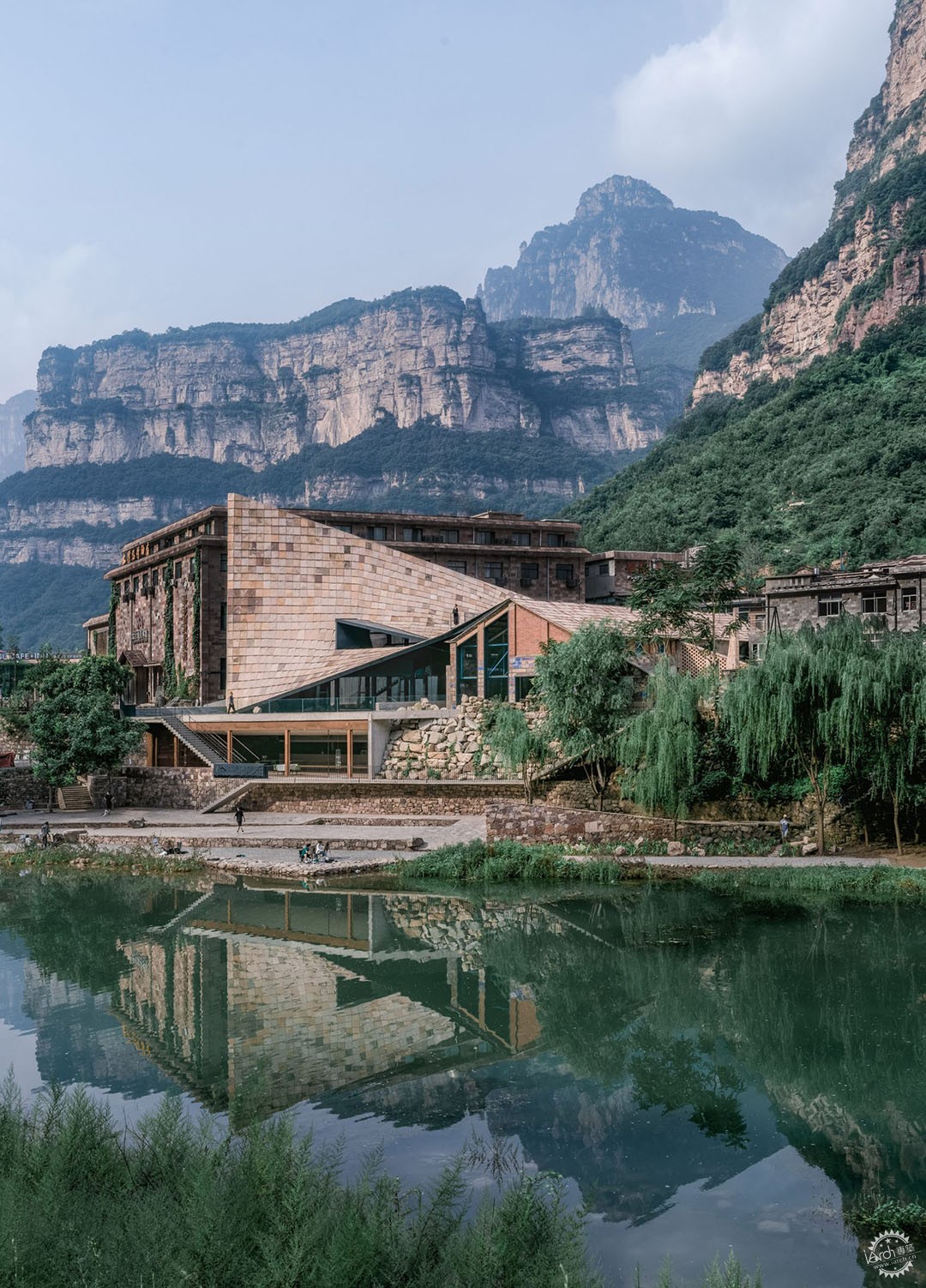
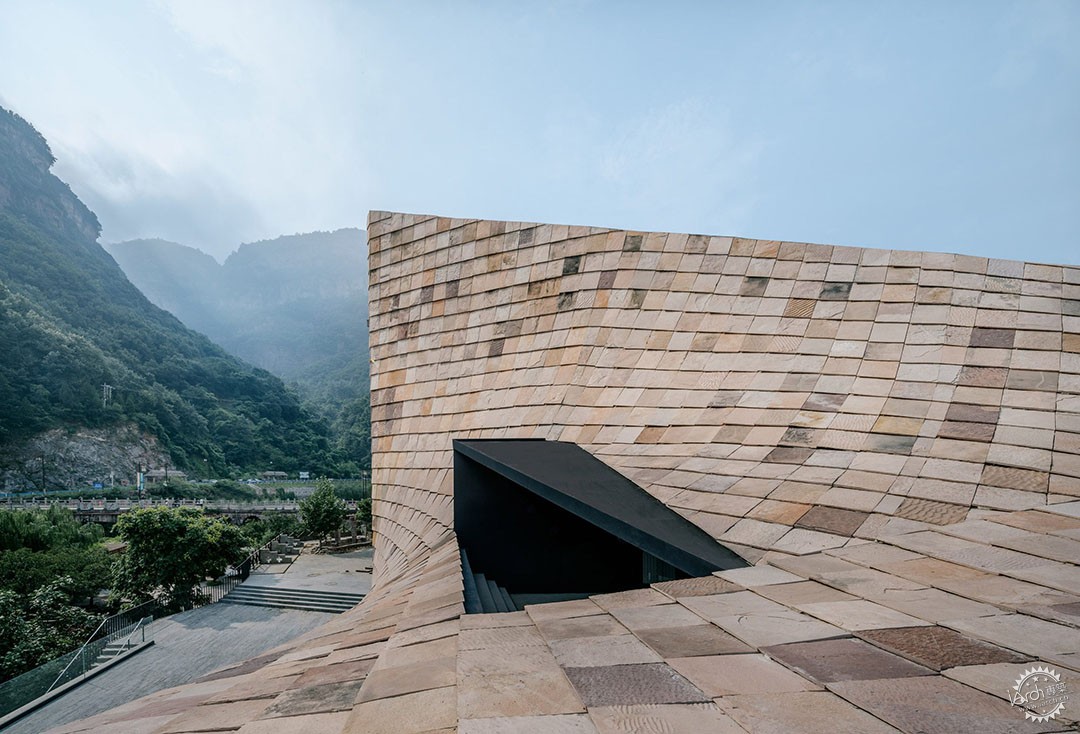
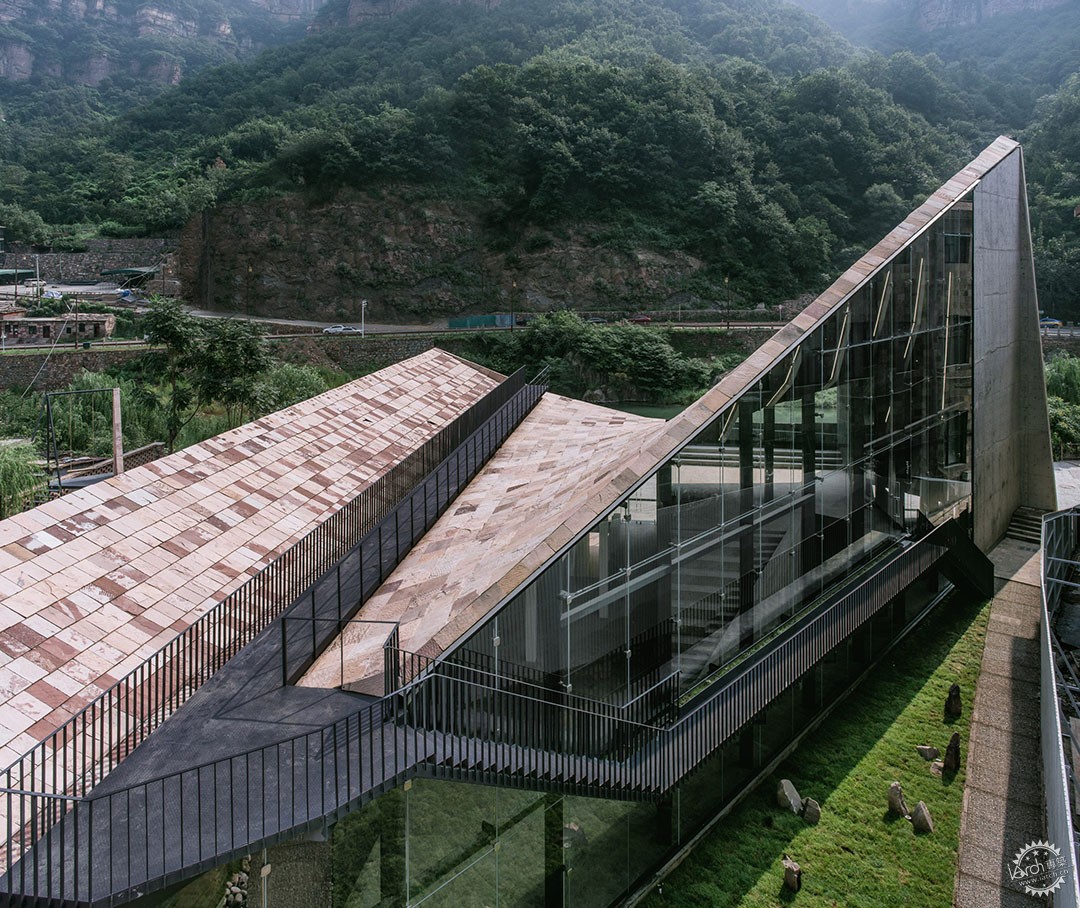
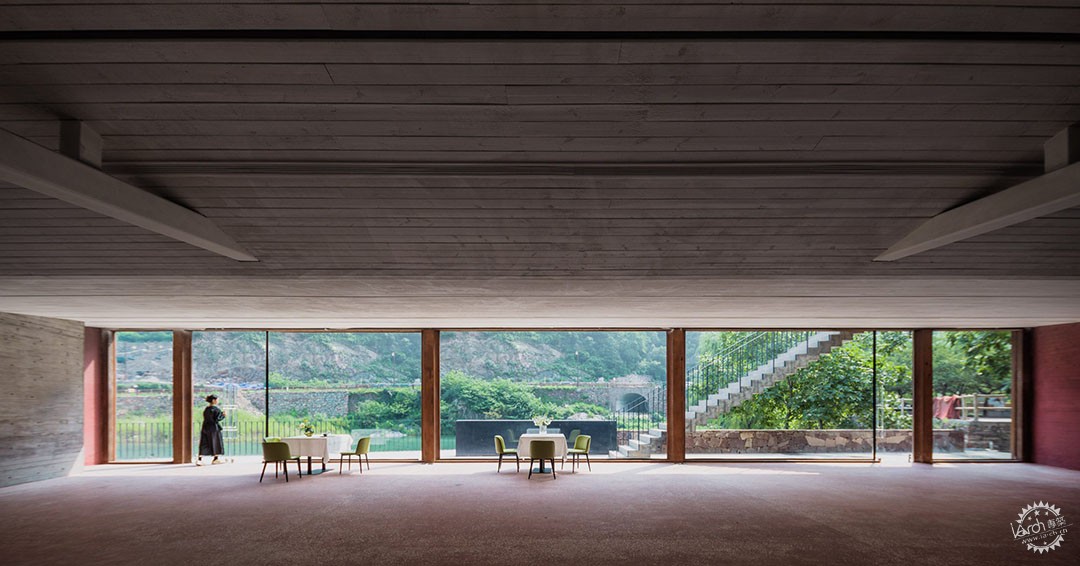
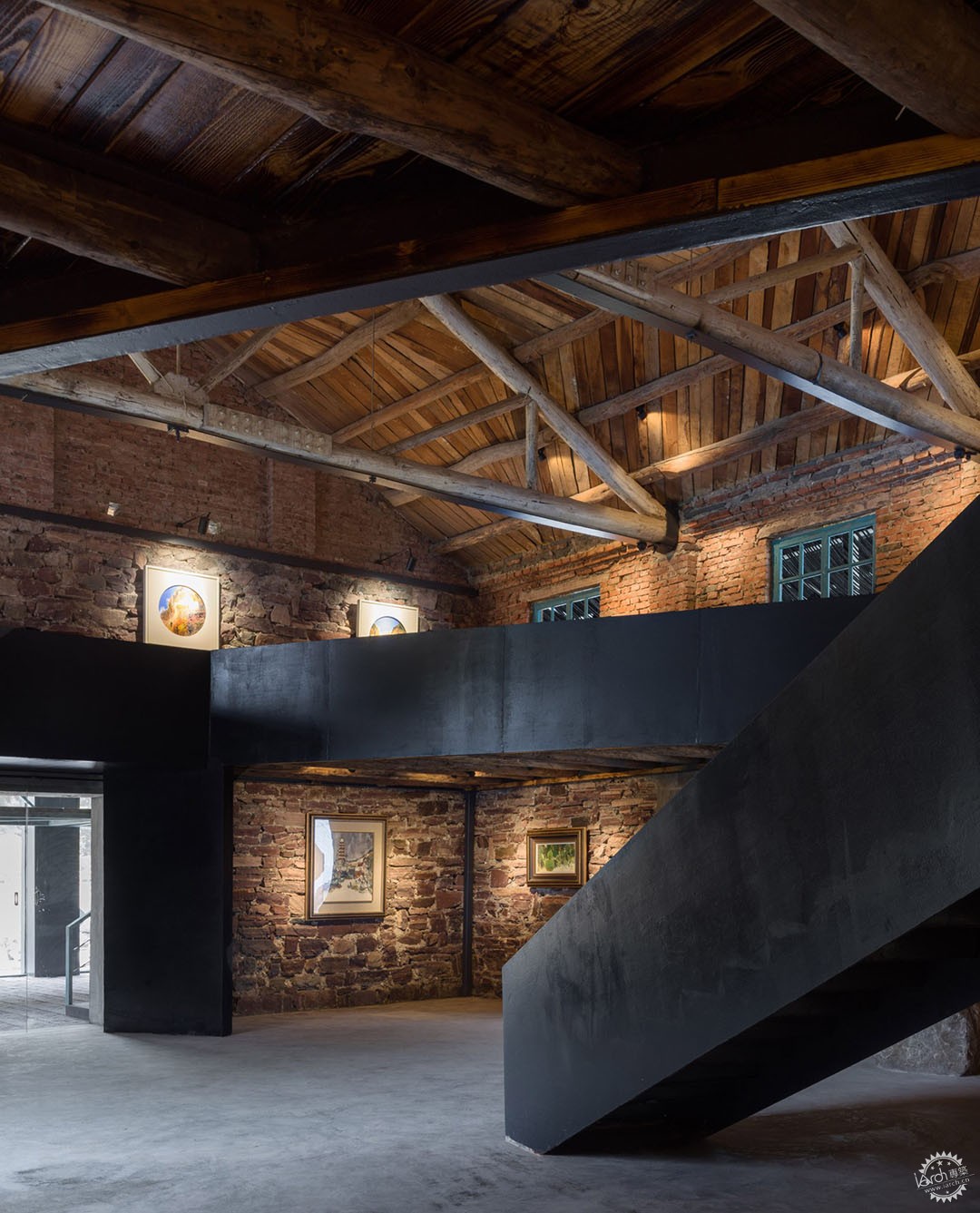
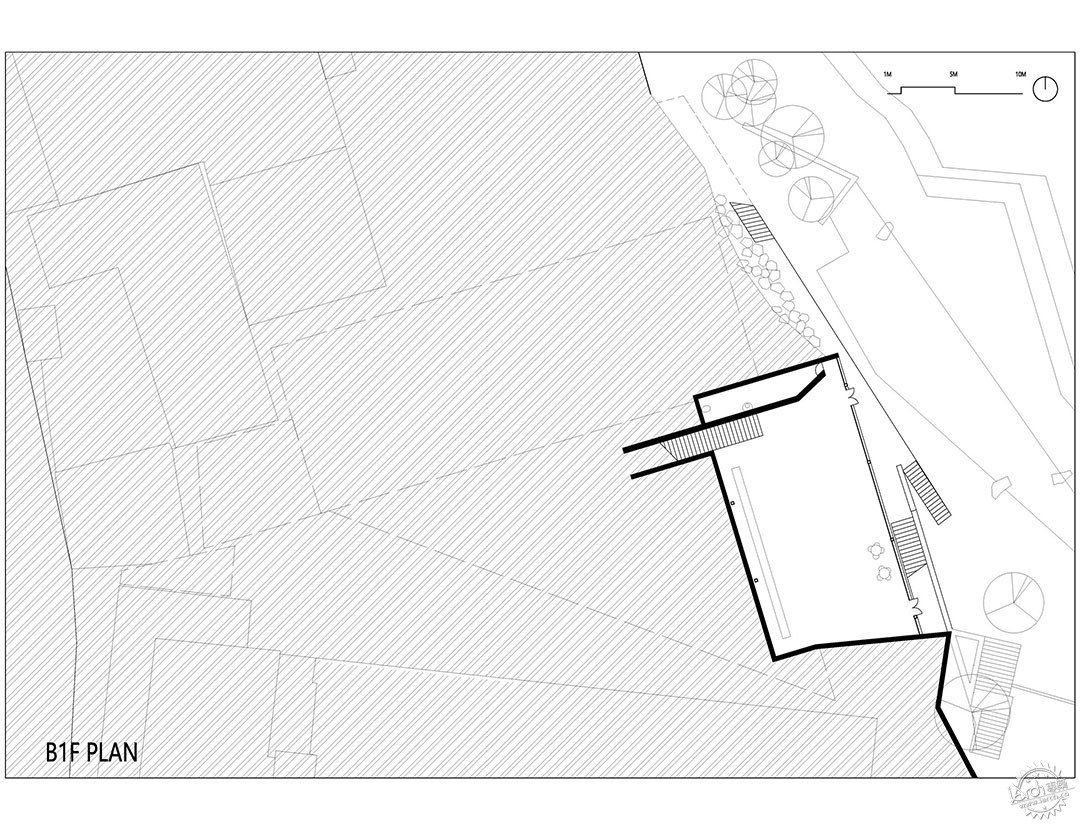
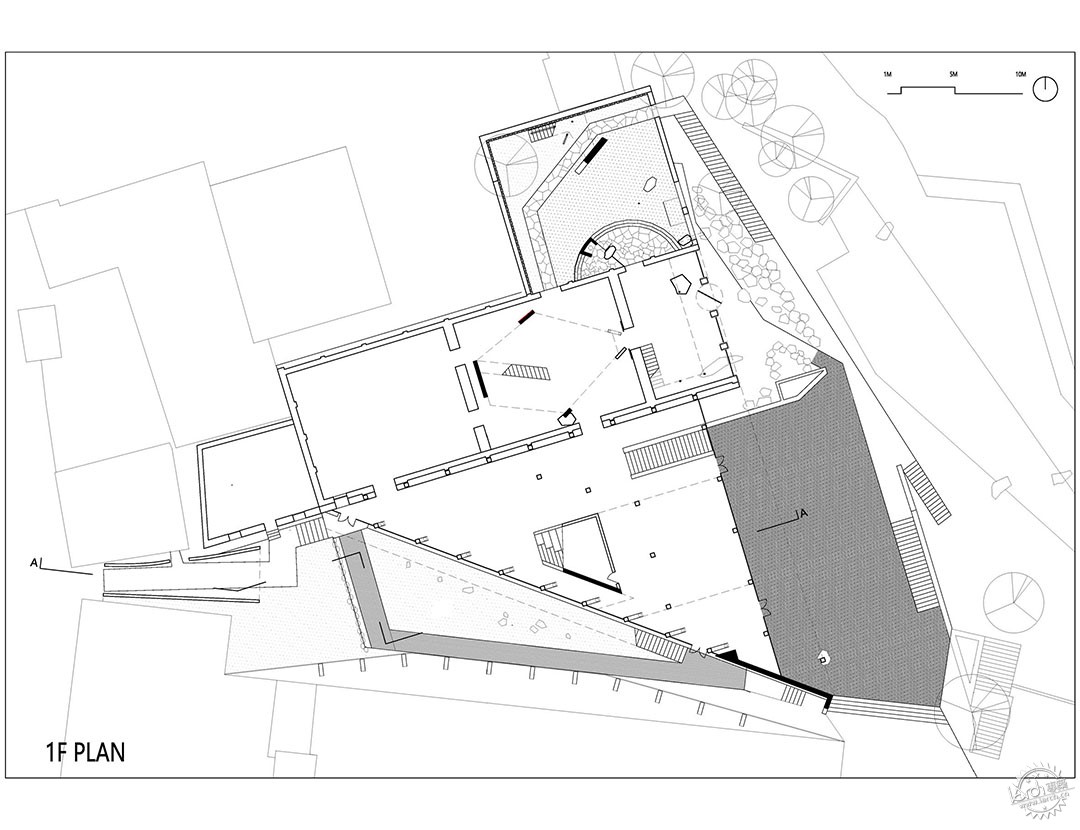

|
|
专于设计,筑就未来
无论您身在何方;无论您作品规模大小;无论您是否已在设计等相关领域小有名气;无论您是否已成功求学、步入职业设计师队伍;只要你有想法、有创意、有能力,专筑网都愿为您提供一个展示自己的舞台
投稿邮箱:submit@iarch.cn 如何向专筑投稿?
